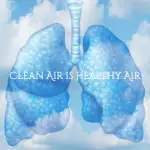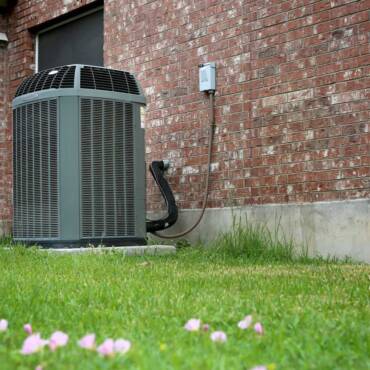Healthy Air in your home is necessary for your health and comfort. Breathing microscopic pollutants over time can severely impact the health of you and your family. Many of these pollutants cannot be detected by sight or smell yet per the American Lung Association “Indoor air can be 2-5 times, even up to 100 times, more polluted than outdoor air. Americans spend 90% of the time indoors. Poor air quality impacts everyone.” {https://www.lung.org/clean-air/indoor-air}
Per NIH “Indoor air quality is a global issue. Both short- and long-term exposure to indoor air pollution can cause a range of health issues, including respiratory diseases, heart disease, cognitive deficits, and cancer. As one prominent example, the World Health Organization estimates 3.8 million people worldwide die every year from illnesses attributable to harmful indoor air from dirty cookstoves and fuel.” NIEH Website for more information
Volatile Organic Compounds can be either
- Organic such as pet odors or Dander from pets or people in your home. Pets and people in your home can produce dander, odors and particulates that can become airborne and circulate throughout your home. Mold Spores, dust mites and Fungus can grow in Moist or damp areas, behind walls, sinks, basements inside your HVAC coils and can also become airborne and create significant health risks and ruin healthy air.
- Inorganic (and much more harmful) VOCs are from smoking (Benzene) , aerosols (Methylene Chloride), formaldehyde (found in building materials, furniture, paint, etc) Fuel used in heating your home or cooking is a major source of indoor air contaminants. Fuels such as gas, propane, wood, coal can all contribute to dangerous airborne contaminants.
The most common health effects of indoor air pollution are and cardiovascular issues and disease. The long term range of effects can be mild irritation and discomfort to chronic disease and disorders from beathing un healthy air.
Recent studies find:
- Just one cubic foot of air can have more than 30 million pollutants—that’s 100 times more than the air outside. Polluted air like this causes 94% of all respiratory problems.
- If you see dust in the air or on your furniture, what you’re really looking at are mold spores, pet dander, bacteria, pollen and other harmful contaminants. About 40,000 dust mites, which increase the chance of asthma development,* can live in just one ounce of dust.
- In addition to visible contaminants, there’s an alarming concentration of harmful particles that are invisible to the human eye. Particulate matter like this is the leading cause of poor indoor air, and it’s found in 85% of homes.*

- Clean surfaces and dust accumulations
- Keeping the interior of the home clean using disinfectants on surfaces, dusting to remove dust and small particulates, vacuuming regularly will help reduce particulates from becoming airborne.
- Change Air Filters often
- HVAC Air filters should be changed every three months or every month if it is a high traffic area or if you have pets.
- Increase Ventilation
- Make sure the home has good ventilation and circulation. The use of dampers can help when the air does not circulate well enough throughout the home. Opening windows on nice days will also help with air circulation.
- Install Whole Home Air Purifier
- Whole home air purifiers work continuously to rid your home of odors, viruses, bacteria, VOC contaminations. Reme LED Whole Home Air Purifier Information
- Install Media Filter Air Purification
- Media Filter Air Cleaners work to remove particulates and odors as well as mold spores. They can work in conjunction with a whole home air purifier in thoroughly cleansing the air. AprilAire Media Filter Air Purifier Information
- Install UV Anti Germicidal Lamp in indoor evaporator coils.
- UV Anti germicidal lamps will keep mild, mildew and fungus from growing on or around your indoor evaporator coil. Dust Free UV Air Purification Information
- Install an Evaporative Dehumidifier
- Research shows that when humidity is properly controlled within a home, it provides effective virus protection. Air that’s too dry can lead to conditions that allow airborne viruses to thrive. By controlling humidity, the amount of time a virus can survive in the air drops drastically. By maintaining balanced humidity between 40% and 60% RH (relative humidity) year round, you can reduce the airborne incidence of health concerns like bacteria, viruses, and dust mites. AprilAire Evaporative Dehumidifier Information
Air Doctor Heating and Air offers many many ways to improve your indoor air quality which can help improve your health. Contact us for more information, CALL OR TEXT US AT 301-799-7200
Whether you require installation, repair, or maintenance, our technicians will assist you with top-quality service at any time of the day or night. Take comfort in knowing your indoor air quality is the best it can be with MOE heating & cooling services Ontario's solution for heating, air conditioning, and ventilation that’s cooler than the rest.
Contact us to schedule a visit. Our qualified team of technicians, are always ready to help you and guide you for heating and cooling issues. Weather you want to replace an old furnace or install a brand new air conditioner, we are here to help you. Our main office is at Kitchener but we can service most of Ontario's cities
Source link


